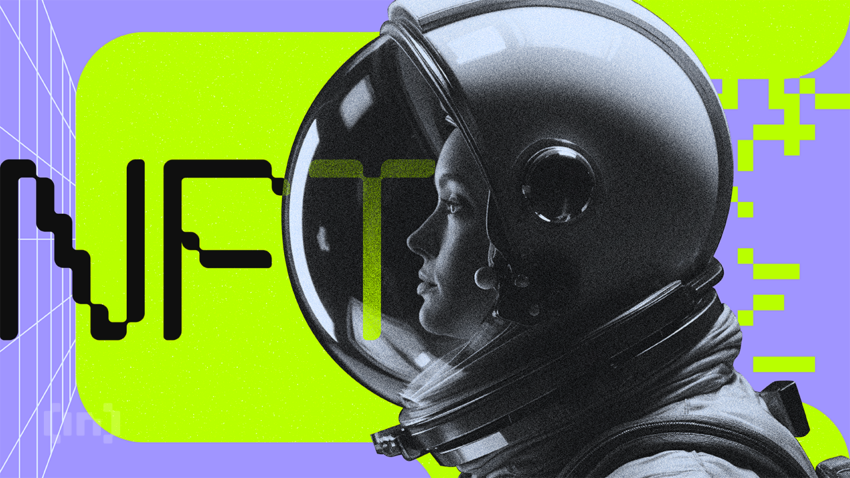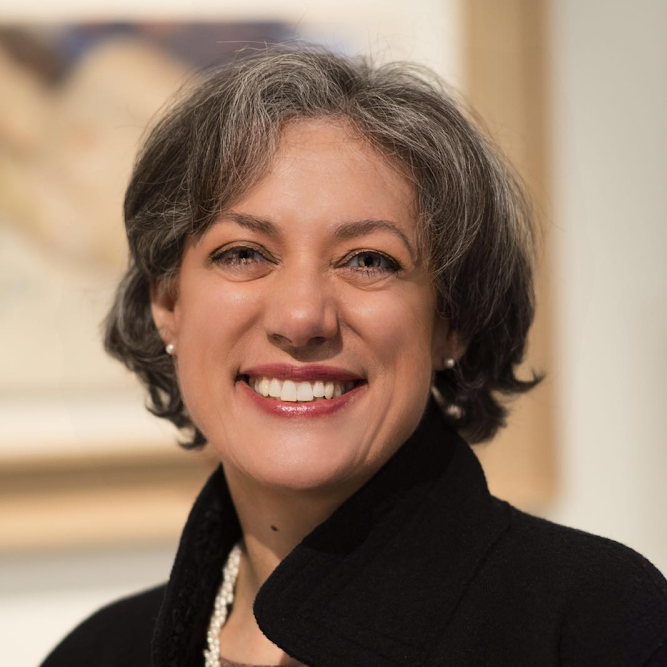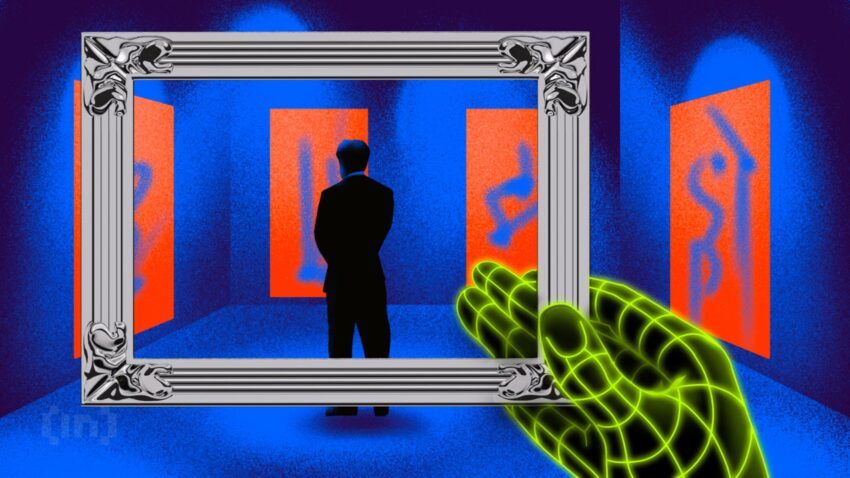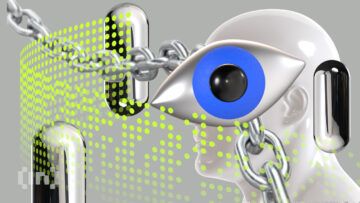There is much talk about AI and generative art. In many cases, unwarranted anxiety is growing. AI is a tool like any other, and if mastered, it opens possibilities without boundaries where only the imagination or lack thereof would be a hindrance. This guide covers everything you need to know about digital art and how to get started in the rapidly evolving industry.
- How digital art has evolved
- NFTs versus digital arts: The same thing?
- What is phygital art?
- Get started in digital art: A step-by-step breakdown
- What artists should consider when choosing a digital platform
- Social media and digital art promotion
- Digital art isn’t just for screens
- Frequently asked questions
- About the author
How digital art has evolved

Let’s start at the beginning. When computers filled entire rooms, artists were already breaking into this space. Yet most of this creativity went unnoticed. At the time, when artists “simply” uploaded data into a machine, collectors and dealers claimed that their work was not art because it was machine-made. Thus, it was unacceptable to art experts — just like when impressionists showed their works for the first time at the Salon de Paris in the late 19th Century. Journalists wrote that what was being exhibited was not art but merely impressions.
With the introduction of PCs, digital art became accessible to many more users. The gaming industry boomed simultaneously. First, it was minimalist (Pong), but over time, the artistry became increasingly complex.
Since Sotheby’s USD 69,000,000 sale of Beeple’s “5000 Days”, public opinion of decentralized digital art has shifted, today, too many people have embraced the technology for it to go away.
NFTs versus digital arts: The same thing?

NFTs and digital art are not at all the same. Like with traditional art, the digital realm can be everything and anything. Categories are rapidly forming between the gaming, the computer natives or media artists, and the savvy aficionados. More and more traditional artists are using computers naturally in their work. Some even feed their computers with codes to generate new images from existing ones. With the recent introduction of open-source AI, the possibilities are endless. In due course, artists will shine, and others may fall out of the limelight.
NFTs, or non-fungible tokens, are algorithms embedded in a blockchain for prosperity. They are a means to digitally transact art or any object using decentralized payment methods. All transactions are verifiable, and any further transactions are also recorded on the blockchain, creating a string of data retraceable and immutable. Non-fungible tokens can represent fragments of an object or editions or be generated repeatedly without limits. These code lines or smart contracts contain all the necessary information about the item being transacted, the terms of the contract, and conditions such as the payment of a royalty to the original creator each time the item changes ownership indefinitely.
What is phygital art?
Phygital packages comprise a tangible object and a twin image tokenized and minted on a blockchain, verifying that object’s identity, ownership, and value like a certificate or proof of ownership. Phygital packages, if implemented at the time of the creation of the object, may, in the future, be the only irrefutable provenance available to everyone.
The implications are significant. Museums, foundations, private collectors, and artists are all able to digitalize and tokenize their collections to protect them for future generations. This can also raise funds with the sales of the NFTs derivatives. Of course, the information for existing objects, particularly antiquity, old masters, and modern works of art, must be foolproof. The tokenization of preestablished authenticity and provenance is only as good as it can be trusted. With time, it will be irrefutable.
Get started in digital art: A step-by-step breakdown
So, how do you join the movement? Here’s what to do, step-by-step.
Step one:
- Digitalizing (scanning) physical works of art and creating still images to mint on a blockchain
- Animating physical works of art and creating short videos to mint on a blockchain
- Creating new works using generic software for special effects and minting them on a blockchain
- Customizing the software to create personalized, unique artworks and minting them on a blockchain
Step two:
- Choosing a platform to sell the art
- Feed it regularly with new artwork
- Choosing a blockchain to mint the art
- Knowing what to include in the terms and conditions of the sale for the smart contract
- (Optional) : Open a crypto wallet if not done already
And finally, step three:
- Building and nurturing a following on multiple social media communities
- Communicating, interacting, and socializing online with your audience
- Attending relevant events in the tech, art, and luxury environments to grow your community
More than ever, targeting an audience, engaging with an audience, and growing an audience are essential to generating sales. All sorts of information must be readily available, easily accessible, and interactive. Consumers need to feel that they are the ones making educated choices, that their voice is heard, and that they can make a difference when, in effect, this is rarely the case. Brands are using their consumer information collected online to create their next line, which in turn is fed to the consumers for more engagement. From here, the loop spirals endlessly. With the introduction of AI, this process is accelerated, and the promotion of products is almost tailor-made to the user.
What artists should consider when choosing a digital platform
The art market set the bar very high, and major players already stand out. The two leading auction houses have developed their digital departments, high-end galleries are exploring the scene, and top artists are emerging rapidly with curators and influencers in toe.
Did you know? Initial media artists like Vera Molnar, widely considered a pioneer of digital, generative art, became a bestseller at the young age of 99. Her NFT auction at Sotheby’s generated $1.2 M. Total in July 2023.
Artists need to weigh their options. Some prefer the idea of vetting and curated platforms, while others prefer the freedom and decentralized option of fully automated marketplaces. Again, it is about storytelling. A digital gallery or auction house exhibition will offer credibility and a ready-made community. A curated marketplace from the IT industry will require new target audiences to reach the art scene. A fully automated marketplace is more open to scams and hacks.
The use, sale, and relisting of tokens touches — every industry, from fashion to medicine, from art to jewelry, and from the entertainment industry to real estate. All are open to swindlers, and protection is necessary. For example, WISe.ART is vetted, the curators establish personal contact with artists and collectors, agents, and beneficiaries (in cases of fundraising), and the WISeKEY technology secures the platform. Other reputable platforms include SuperRare, Nifty Gateway, and Verse.
Some platforms function with their own blockchain, while others operate on the most popular ones and offer more than one. The choice of blockchain is often dictated by traffic (the more, the better but also, the more expensive depending on the protocol; proof-of-stake or proof-of-work), sustainable impact (most blockchains are eco-friendlier these days), or by the initial choice of platform. There is no rule, and most also offer collectors the possibility to purchase NFTs with a credit card.
Payments and royalties
The terms and conditions, including the royalty payment, are determined in the smart contract and are immutable once minted on a blockchain. In fact, the NFT created when the terms are minted is no more than an algorithm to which an image is connected and stored in the owner’s wallet. Some blockchains like Ethereum or Tesoz are better adapted for storing NFTs in user’s wallets. Images can also be stored in cold wallets to improve security and reduce risks associated with online/hot wallets.
Valuation and royalty determination are difficult to assess because the market is volatile, benchmarks do not exist yet, and track records are difficult to chart. Investing and holding is one option. Money is also to be made (but also lost!) by flipping the pieces, i.e., relisting immediately. As with any other investment, diversification is key, and there is no harm in hedging positions. However, art buyers must first and foremost believe in what they are buying. Whether one collects for gain, digitally or physically, the emotional component remains the same as before technology came into action.
Social media and digital art promotion
Artists have learned to interact with their collectors on social media on a continuous momentum. Social media posts are not direct sales ads, but they work similarly. Attractivity and popularity go hand in hand, and trends are set when posts go viral. The social media channels will pick up on the more popular users and define influencers to boost information; once that happens, sales are generated, and the loop begins. Communication can be delegated to social media managers; unless an artist is strategic and disciplined, this is often advisable. Once a profile is established on social media, it is important to understand that nothing replaces social-physical interaction. Artists must be visible — establishing a social media persona is often key to digital art sales.
Digital art isn’t just for screens
The number of conventions, art fairs, and NFT Days across all major cities worldwide is growing steadily. Artists or their agents should attend as much as possible. Most events are recorded and streamed online, and participating in panels, webinars, round tables, and other conferences is part of the game. While digital art begins behind a screen, becoming a successful creator in 2023 often requires merging the digital with the physical.
Frequently asked questions
How does an artist fix the royalty %?
Where can you learn about the fourth revolution?
About the author

Sixtine Crutchfield is a native of Basel whose family is originally from Neuchâtel. She grew up in Geneva, Switzerland. Skiing took her to Denver, Colorado, and while pursuing a career in the arts, she developed a travel fever, which lured her from the U.S. to Australia. Jan Krugier instilled in her a more vibrant passion for art and an unapologetic curiosity for any form of artistic creativity. The projects she carried out in Australia touched on cultural, social, and environmental aspects. Following her law studies there, she was a spokesperson representing one of the world’s first eco-tourism facilities on Phillip Island, Victoria.
Back in Switzerland, in charge of a UHNW clientele in a local private bank, her know-how in project management won her the trust of her employers and clients. Finally, she returned to the art market to run several art fairs for over 10 years. On the strength of these experiences, she devised an MBA in Art Management in seven parts over 18 months, launched in February 2022 at Geneva Business School.
In 2021, Sixtine accepted a new challenge as Art Director of WISe.ART, the new platform for entrusted NFT powered by WISe.Key, a listed company on the Nasdaq and SIX stock exchanges, specialized for more than 20 years in cyber security.
Disclaimer
In line with the Trust Project guidelines, the educational content on this website is offered in good faith and for general information purposes only. BeInCrypto prioritizes providing high-quality information, taking the time to research and create informative content for readers. While partners may reward the company with commissions for placements in articles, these commissions do not influence the unbiased, honest, and helpful content creation process. Any action taken by the reader based on this information is strictly at their own risk. Please note that our Terms and Conditions, Privacy Policy, and Disclaimers have been updated.




